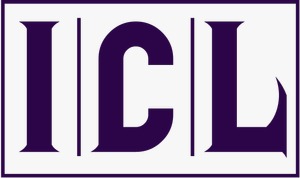An analysis of oral presentation skills
The case of Pakistani ESL students
Keywords:
Lacks, Oral proficiency, Presentation skills, ESL, PakistanAbstract
Since English has become an international language, it has become need of the hour to acquire English speaking proficiency. It is considered a prerequisite of success and sought for survival in the globalized discourse community of English speakers. Thus, it has become the top priority of English language learners to focus on oral presentation skill. The previous works are abundant with descriptions of ideal presentations but there exists little work on the actual presentations of the SLA students, their lacks and the role of the language teacher. This paper not only talks about the actual presentations of the language learners but also explores the role of the language teacher, needs of learners, the reasons/ factors and the possible solutions. For this purpose, the presentations of the randomly selected learners were recorded both in audio and video form and were analyzed by comparing them with the rubric developed by the researchers. The results of the present study reveal a long list of the lacks and needs of the learners' presentation skills and speaking skills. This research opens up a vast field for future research more practical in nature concerning the needs of the learners instead of defining an ideal presentation.
Downloads
References
Abbas, F. and Iqbal, Z. (2018). Language Attitude of the Pakistani Youth towards English, Urdu
and Punjabi: A Comparative Study. Pakistan Journal of Distance and Online Learning, 4 (1),
- 214.
Abbas, F., Anjum, K. and Pasha, S. B. (2019). Speech Act of Apology by Pakistani English
Speakers through the Theory of Politeness. Dialogue, 14 (2), pp. 196-213.
Abbas, F., Aslam, S. and Rana, A.K. (2011). Code-Mixing as a Communicative Strategy among
the University Level Students in Pakistan. Language in India. 11 (1), 95 -108.
Abbas, F., Aslam, S. and Yasmeen, R. (2011). Communicative Language Teaching: A Modified
Version. Language in India, 11 (4), 331 – 341.
Abbas, F., Pervaiz, A. and Arshad, F. (2018). The competing status of Urdu and English after
declaration of Urdu as official language in Pakistan. Journal of Research (Urdu), 34 (1), 142
– 158.
Aida, Y. (1994). Examination of Horwitz, Horwitz, and Cope’s construct of foreign language
anxiety: The case of students of Japanese. The modern language journal, 78(2), 155-168.
Airey, J., & Linder, C. (2006). Language and the experience of learning university physics in
Sweden. European journal of physics, 27(3), 553.
Alam, Q., & Bashir Uddin, A. (2013). Improving English oral communication skills of Pakistani
public school’s students. International journal of English language teaching, 1(2), 17-36.
Boonkit, K. (2010). Enhancing the development of speaking skills for non-native speakers of
English. Procedia-social and behavioral sciences, 2(2), 1305-1309.
Brooks, G., & Wilson, J. (2014). Using oral presentations to improve students’ English language
skills. Humanities Review, 19, 199-212.
Coleman, J. A. (2006). English-medium teaching in European higher education. Language
teaching, 39(1), 1-14.
Derwing, T. M., Thomson, R. I., Foote, J. A., & Munro, M. J. (2012). A longitudinal study of
listening perception in adult learners of English: Implications for teachers. Canadian
Modern Language Review, 68(3), 247-266.
Dudley-Evans, T. (1998). Jo St JM Developments in English for Specific Purposes.
Feak, C. B. (2013). ESP and Speaking. The handbook of English for specific purposes, 35.
Gani, S. A., Fajrina, D., & Hanifa, R. (2015). Students’ learning strategies for developing
speaking ability. Studies in English Language and Education, 2(1), 16-28.
Harmer, J. (2007). The practice of English language teaching. Harlow: Pearson Longman.
Hincks, R. (2010). Speaking rate and information content in English lingua franca oral
presentations. English for specific purposes, 29(1), 4-18.
McDonough, J., & Shaw, C. (1993). Materials and Methods in ELT. OUP.
Meloni, C. F., & Thompson, S. E. (1980). Oral reports in the intermediate ESL classroom.
TESOL Quarterly, 503-510.
Memon, R. Y. (2000). A study of how English is taught in government schools in Karachi.
Rajoo, A. S., & Xavier, F. (2002). Motivational styles and instructional designs of second
language learning: a brief insight into students’ language learning preferences/Francis
Xavier AS Rajoo. Wahana Akademik, 1(1), 76-85.
Ross, K. E. (2014). Professional development for practicing mathematics teachers: A critical
connection to English language learner students in mainstream USA classrooms. Journal of
Mathematics Teacher Education, 17(1), 85-100.
Saito, Y., & Samimy, K. K. (1996). Foreign language anxiety and language performance: A
study of learner anxiety in beginning, intermediate, and advanced‐level college students of
Japanese. Foreign Language Annals, 29(2), 239-249.
Sambath, S., & Sethuraman, M. (2017). Constraints in Spoken Proficiency: Causes and Remedial
Measures. Eurasian Journal of Applied Linguistics, 3(2), 23-42.
Shanmugasundaram, S. (2013). Factors Affecting the Spoken English of Tertiary Level Students
from Arts and Science Colleges in the District of Tiruchirapalli and Thanjavur-A Study
(Doctoral dissertation, PhD Thesis, Department of Humanities, NITT).
Tang, C. H., & Zhang, G. Q. (2009). A contrastive study of compliment responses among
Australian English and Mandarin Chinese speakers. Journal of Pragmatics, 41(2), 325-345.
Tsiplakides, I., & Keramida, A. (2009). Helping Students Overcome Foreign Language Speaking
Anxiety in the English Classroom: Theoretical Issues and Practical Recommendations.
International Education Studies, 2(4), 39-44.
Yahya, M. (2013). Measuring speaking anxiety among speech communication course students at
the Arab American University of Jenin (AAUJ). European Social Sciences Research
Journal, 1(3), 229- 248.
Yong, Z., & Campbell, K. P. (1995). English in China. World Englishes, 14(3), 377-390.
Downloads
Published
How to Cite
Issue
Section
License
Copyright (c) 2021 Competitive Linguistic Research Journal

This work is licensed under a Creative Commons Attribution-NonCommercial-NoDerivatives 4.0 International License.


